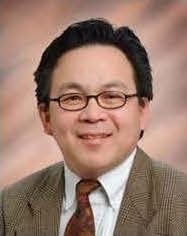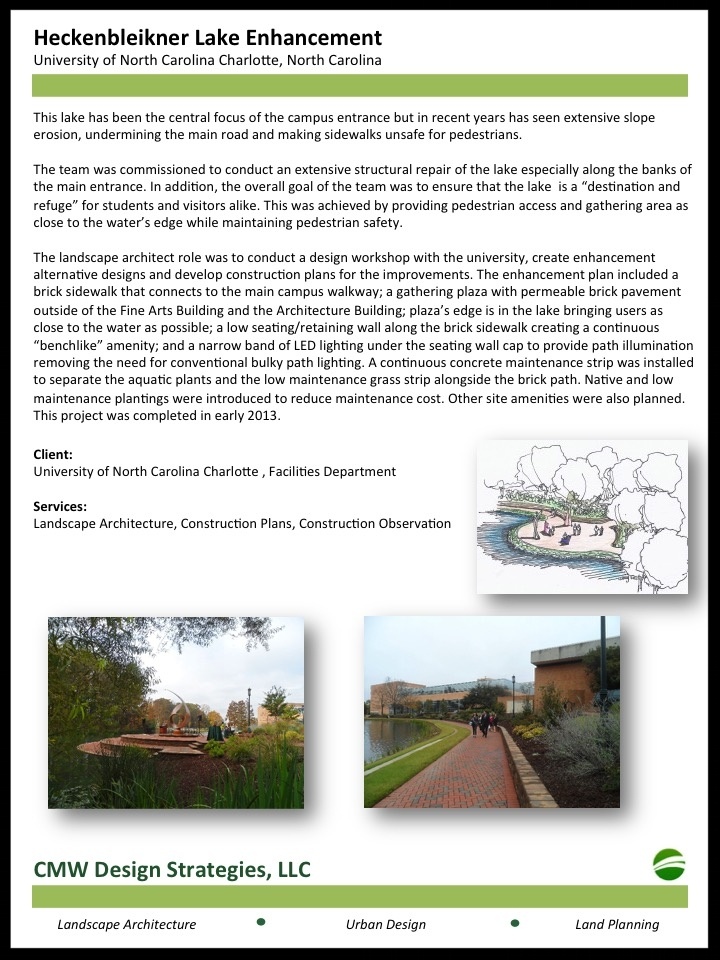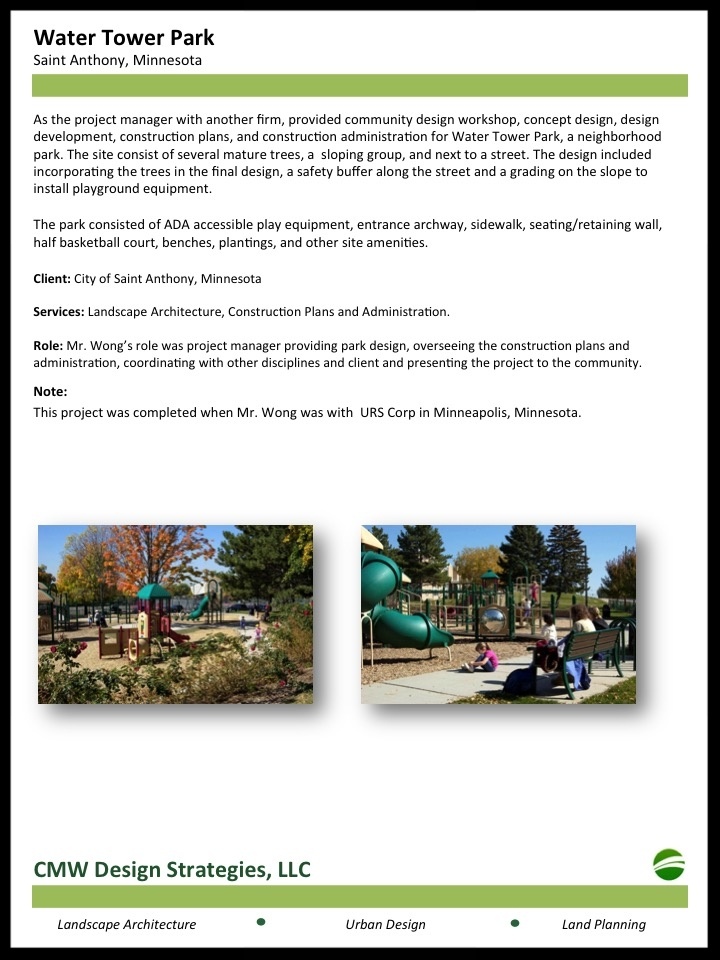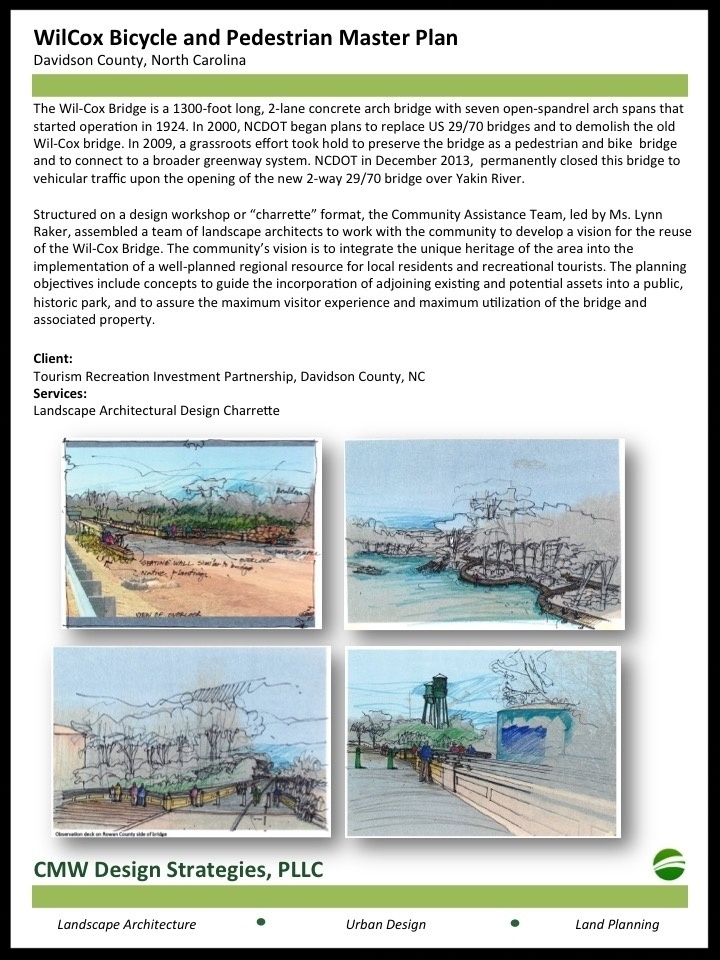
July 2016's feature designer is Augustine Wong, PLA, ASLA, who has 25 years of experience as a landscape architect. We recently spoke with Auggie about his background in urban design and urban planning, and how that impacts his design style for greenway and large trail projects. He also shares how his "visual thinking" process works as a time-saving tactic.
Note: The PermaTrak featured designer article series showcases top performing landscape architects and engineers who discuss their design perspective, current projects, challenges and accomplishments. Do you know a top performing landscape architect or engineer you'd like to nominate? Send us a note in the footer of this page and we'll be in touch!
Q: Where did you study landscape architecture, and what was the start of your career like?
Auggie: I earned my Bachelor of Landscape Architecture and Bachelor of Environmental Design from the University of Minnesota, and my Master's in Urban Planning and Graduate Certificate in Urban Design from the University of Washington. I started like any landscape architecture graduate – working for a consulting firm – in Minneapolis. Largely, I was doing park design, streetscapes, and lots of sketching.
Then I moved to doing larger parks and multi-use trails, more streetscape design, trail corridors, greenway corridors and other recreational facilities. My urban design and urban planning education allows me to do broader urban related and economic development projects.
Q: Can you tell us about your practice?
Auggie: Since early 2010, I've had my own practice, located in Charlotte, N.C. We provide landscape architecture, land planning, urban design and transportation enhancement consulting services.
Q: When working on the trails, greenway systems and trail corridors you mentioned, how would you describe your process? How do you approach a project like that?
Auggie: I start from a regional scale, understand who the users are, the population growth and how users will be accessing the facility. I look at greenways as a green transportation network and how it could provide connection between neighborhoods, work, leisure and nature. So as a landscape architect, I look for missing gaps in connections between communities and places, and to provide the user experience to these facilities. Once I have an understanding of what is required, we do an in-depth site analysis- which is looking at the site’s natural system and conditions, views, landform, vegetation cover and others so we know the opportunities and constraints of the site.
Q: What does your pre-design project analysis look like?
Auggie: We look at the what, where, how, who, why and when type of analysis, the SWOT analysis: the strengths, weaknesses, opportunities and threats. We also work with engineers, surveyors and other professionals to ensure we have the right information so we can minimize the impact or do not add any more stress to the environment. For example, we strategically locate the trail and avoid as much tree removal as possible. This provides a couple of benefits:
- It improves user experience;
- It ensures aesthetic quality; and
- It enhances the environmental experience of the site.
Q: How do you start laying out the trail?
Auggie: Sometimes what I do is I walk with the client and maybe with the engineer, surveyor and other professionals. This gives the team a real understanding of the site’s opportunities, issues and what improvement may be needed to deliver a safe and usable project. With a base map we are able to identify site issues, views, natural amenities, and potential alignment.
Depending on the size of the project, we mark the centerline of the trail for the surveyor to collect data points. Soil tests would be conducted along the centerline to give our team a good read of what we have to deal with for the proposed trail foundation or for a boardwalk foundation.
A site plan will be developed along with supporting graphics to help deliver the story to the community and the client. There are other ways to approach the planning and designing of a trail but they all want to achieve stakeholder and community buy-in.
Q: What design steps follow a finalized master plan in your process?
Auggie: Again there are many ways to approach this but once a master plan has been approved a preliminary construction cost is normally prepared to give the decision makers an idea of what the cost of the plan would be. Depending on availability of funds most projects are implemented in phases.
This will follow with design development and construction documents preparation. Most often during the design development phase we work with different vendors and suppliers to find out how we can improve the project in the form of buildable, maintainable and cost reduction.
For example, if it is a trail with a boardwalk, we need to find out what are the different products are that meet the standards and safety requirements, as well as the overall cost from construction to maintenance.
So once that's approved, we proceed into design development and construction documents. Depending on the type of products we are proposing, we typically contact local vendors and suppliers to find out what new and improved products this project may benefit. This may be lighting, site furnishings, or boardwalks. Working with the client, vendor and the design team, we evaluate the product for safety requirements, cost, maintenance and ease of construction. If there is a need for foundation design, the structural engineer will provide the details and likewise with other disciplines.
Once all the reviews have been made and permits secured, the project will be advertised for bid and selection of the most responsible contractor is made. So that’s the quick summary of the design process but one has to understand that there are lots of little steps that would be taken to have a successful project.
Q: Well, actually I would say that's a very thorough description of the process. We know it takes a long time for a project to go from start to finish; there are a lot of steps involved.
Auggie: Yeah. There are different ways you can get to a point. The most important step, for me, is during the site analysis phase- since one really has to “listen” and “see” the site’s constraints and opportunities in order to maximize its best use.
Q: What do you think makes you different from other landscape architects when they approach a similar project?
Auggie: My diverse experience from designing resort master plans to pocket parks in the US and abroad allows me provide design solutions to my clients. I mentioned earlier about the ability to “listen” and “see” what the site has to offer. In this context, I enhance these abilities with a “visual thinking” process which is to graphically produce the design and planning ideas either on the spot or while discussing with the client.
As we all know, a picture says a thousand words, and in this case, quick hand drawings and sketches can deliver conceptual design ideas and produce the type of character experience immediately. This hand sketching is a very effective tool to tell a convincing story and to give the client a better understanding of the design solution. It is also a quick tool to test design options without spending too much time.
Q: What projects are you most proud of?
Auggie: I was part of the design team in Minneapolis that worked on the Suburban Hennepin County Greenway Corridor in the ‘90s. To start the design process, we basically rode the corridor. It took us the whole day to ride the corridor, which was a combination of an abandoned railroad and an informal dirt trail. At certain points, we stopped, took notes and pictures, discussed the challenges and opportunities that could be created. We also sketched to depict what might be one of the design solutions. At the Main Street, we looked at how this future trail could link to other landmarks and places. This was one of the first greenway trails that I had the opportunity to design. There are others including the Ramsey County Regional Trail, Mill Ruins Park, Briar Creek Greenway, and several urban design projects.
Q: Any notable projects you’re currently working on?
Auggie: I’m partnering with several engineering firms in Charlotte and we are currently working on the Charlotte Cross Trail project. We have completed several projects for the University of North Carolina Charlotte and Johnson C Smith University.
Other Noteworthy Projects:
Heckenbleikner Lake Enhancement, University of North Carolina

Water Tower Park, St. Anthony, MN

WilCox Bicycle and Pedestrian Bridge Master Plan, Davidson County, NC

Photo Credit: top background photo by Anna Hesser


